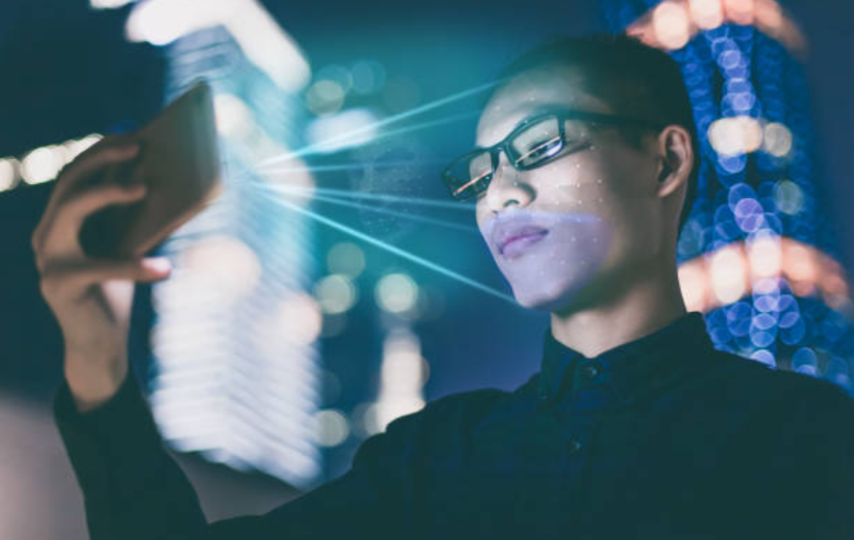Users are more concerned about safeguarding their digital identities and personal information than ever. This cutting-edge software uses clients’ distinctive behavioral and physical characteristics for verification, as biometrics has played an essential role in improving security measures. Along with other crucial biometric methods, ‘liveness detection’ is a necessity as it ensures that the user is lively or not a fake user. This blog will cover what liveness detection is and why it’s necessary to secure an online presence.
Opportunities abound in our internet environment, but there are also constantly changing risks. Our digital assets and ourselves must be protected at all times, from financial fraud and identity theft to illegal access and data breaches. Liveness detection, the digital era’s security nanny, intervenes in this situation.
What is Liveness Detection?
The method known as “liveness detection” determines if a person presenting biometric information, like a face or fingerprint, is authentic or a spoof, such as a mask, photo, or even deepfake. It essentially adds a critical layer of security to biometric authentication techniques by separating the genuine from the simulated.
Liveness Detection: Essential What and Why
A specific technique is used to detect a phishing or spoof attempt: liveness detection. This determines if the source of verification is live or a fake representative. The algorithm of liveness detection plays an essential role in inspecting users. If the software detects that it’s not a real user, then it automatically and instantly notifies the employer about this. This helps restrict imposters from accessing user-sensitive information or entering restricted premises in different scenarios. Let’s move forward to explore the major categories of liveness detection.
- Active Liveness
This detects the real-time signs of authentic users to comprehend if the user is legitimate or fake. It incorporates diverse modalities, including speaker recognition and keystroke analysis. Then, it inspects the user’s mouth movement to analyze liveness. Users have to show some signs of life, but these techniques usually suffer from accuracy, usability, and user interaction issues.
- Passive Liveness
Passive liveness detection searches for any signs of proof along with looking for signs of life. This feature doesn’t depend upon any active user participation. It’s more powerful as it can employ different algorithms in a very discreet way that yields highly advanced technology that can also be adapted over time.
Importance of Liveness Detection
For the following reasons, liveness detection is essential:
- Enhanced Safety
Liveness detection ensures the overall safety posture of biometric software by providing its additional layer. This makes it more authentic for access control, secure authentication, and mobile banking applications.
- Reduces Fraud
Imposters can easily spoof user-sensitive information without a liveness detection feature. By utilizing a video or images of the authentic fingerprint, face, or other biometric characteristics, users can secure themselves. Moreover, liveness detection technology assists firms or individuals in preventing these illegal attempts. By doing so, companies are more reliable and authentic for apps, including access control, secure authentication, and access control.
- Ensures Privacy
Genuine users are the primary concern of firms, so they need biometric authentication to ensure their privacy. Liveness detection is the famous biometric system that significantly improves users’ and firm’s productivity. Also, it reduces illegal attempts of users to secure their information. Moreover, this also minimizes the risk of safety violations that use unauthorized images or materials.
Techniques of Liveness Detection:
Several methods are used in liveness detection to separate a real person from a spoof:
- Motion analysis: Monitoring minute changes in head gestures, blinking, and facial expressions to verify life.
- Challenge-response: Requesting that users take certain behaviors in order to confirm their physical presence, such as blinking or turning their heads.
- Depth sensing: The process of evaluating depth data and differentiating between actual faces and flat representations using 3D sensors.
- Texture analysis: Distinguishing between natural and manufactured materials by analyzing the texture of the skin and minute flaws.
- Liveness testing with AI: With great accuracy, sophisticated algorithms evaluate a range of biometric characteristics and micro-expressions to determine liveness.
Working of Liveness Detection
To determine if biometric technology can secure essential information, liveness detection plays an integral role. Hence, it’s essential to understand it’s working to ensure user safety and privacy. Few are typical methods that are used in liveness detection:
- 3D Depth Sensing
In the market, there are several 3D depth-sensing mobile phones which have low resolution. But, it will transform soon. Usually, vendors claim that 3D sensors are available in mobile systems that use proxies to infer 3D data and perspective distortion. Hence, this advanced software has no accurate 3D structure understanding and needs user communications. With technological advancement, 3D hardware will provide more robust matching apps and liveness detection.
- Texture Analysis
This point covers examining the unique texture and details of the user’s fingerprints or skin. However, authentic skin exhibits perspiration and distinctive feature patterns that are complicated to replace with synthetic material or images.
- Machine Learning
Using modern AL techniques enables robust machine learning that is also able to detect subtle picture revolution, resulting in presentation or spoofing attacks. That’s why it includes incorporating 3D layouts and inspecting subtle quality differences in phishing attacks that aren’t visible to the common human eye.
- Motion Analysis
Cutting-edge technique depends upon analyzing and tracking the subject movement. For instance, by using face recognition technology, the software commands the person to smile, blink, and tilt their head. Also, authentic individuals respond naturally through involuntary movements that can be easily detected. However, static videos or images can’t replace these movements.
- Challenge Response Test
A challenge-response test is essential in liveness detection as the system asks individuals to execute certain actions. For example, speak a random phrase or turn head to analyze the response to ascertain liveness.
Final Verdict
Liveness detection is an essential feature that firms can avail to improve their productivity and save cost and time. Cutting-edge technologies provide secure biometric recognition to overcome phishing, spoofing, or presentation attacks. Maximizing usability and providing a frictionless user experience is the optimal solution that a user can enjoy.
In the digital age, liveness detection is an essential security measure that keeps us secure from many online dangers. Knowing its significance, various approaches, and upcoming developments gives us the ability to move more securely and confidently through the digital environment. Building a safer and more reliable digital future will depend on adopting and adjusting liveness detection as technology changes and security landscapes alter.



